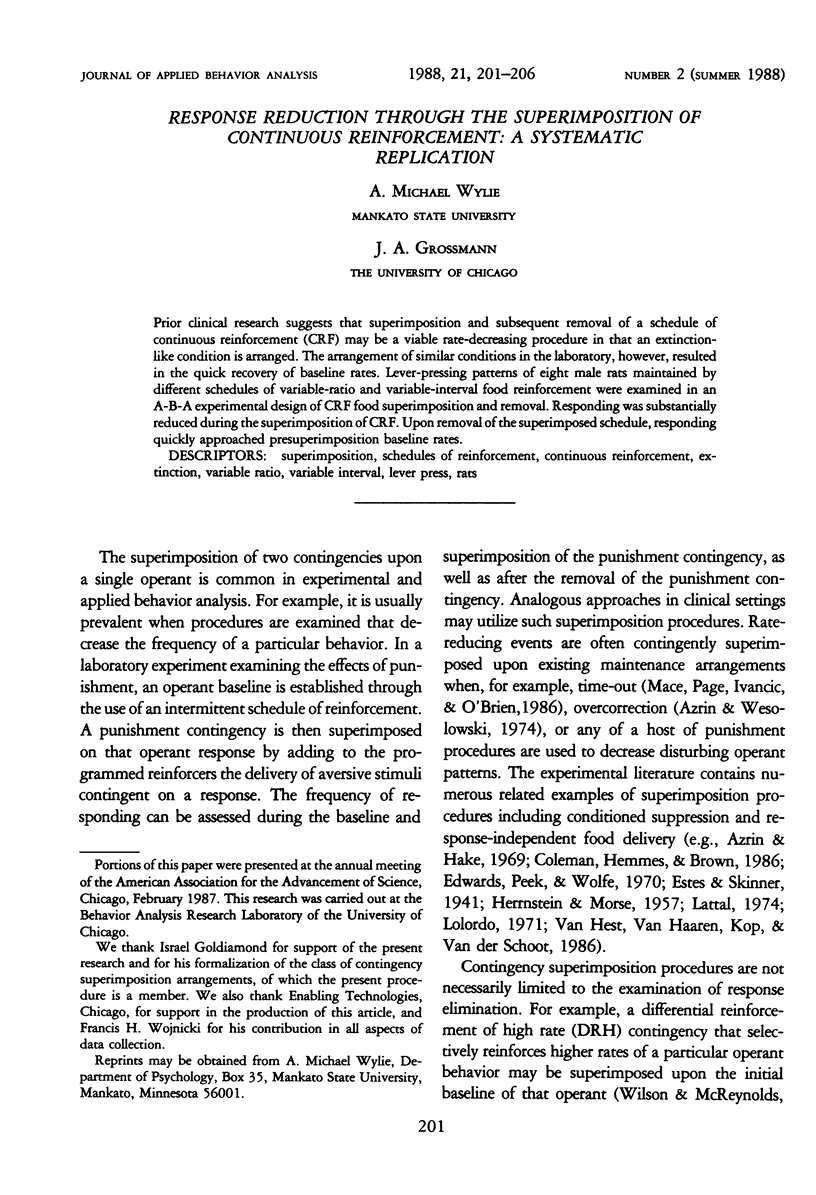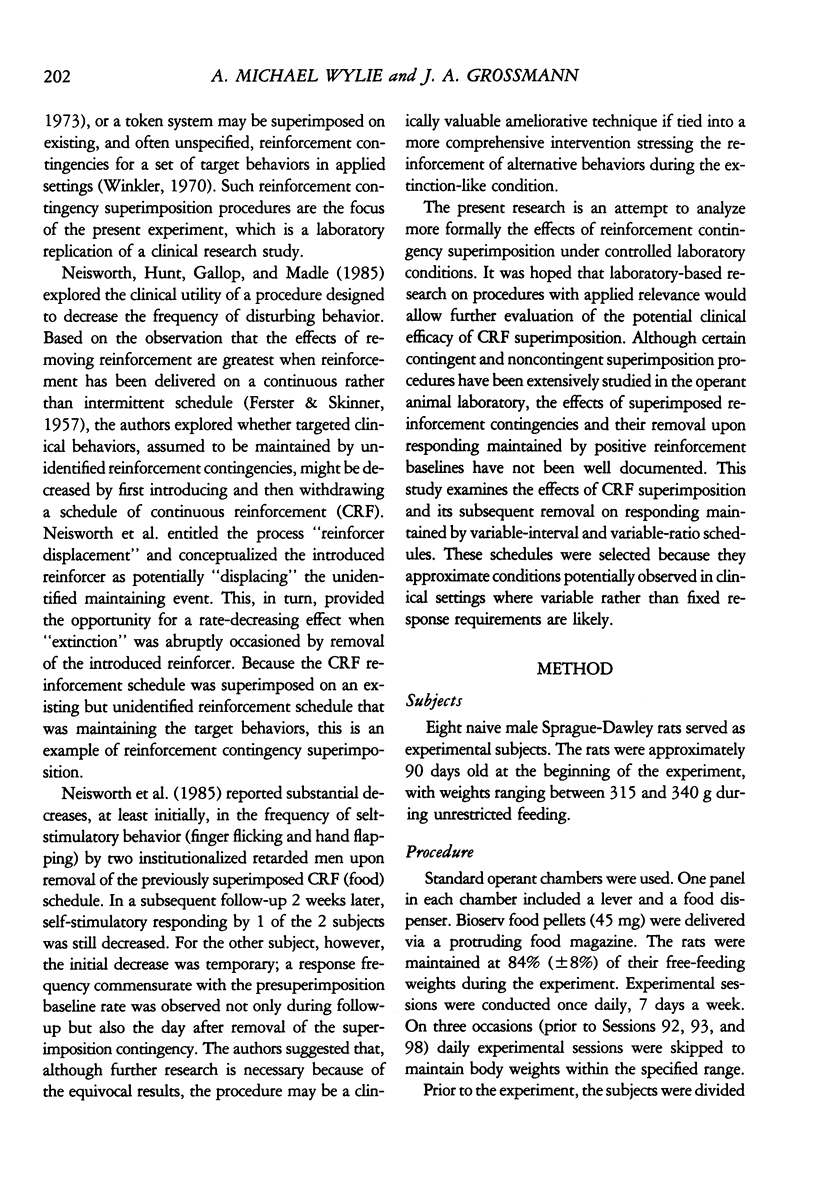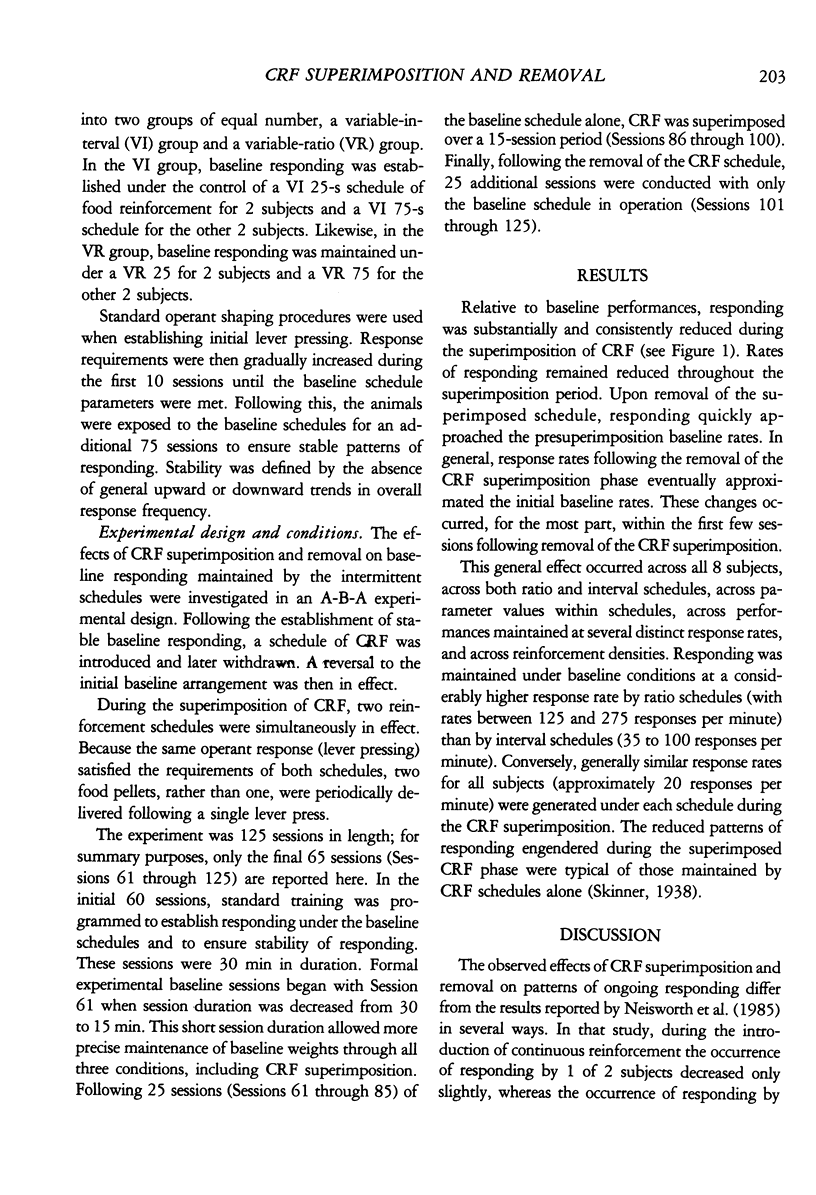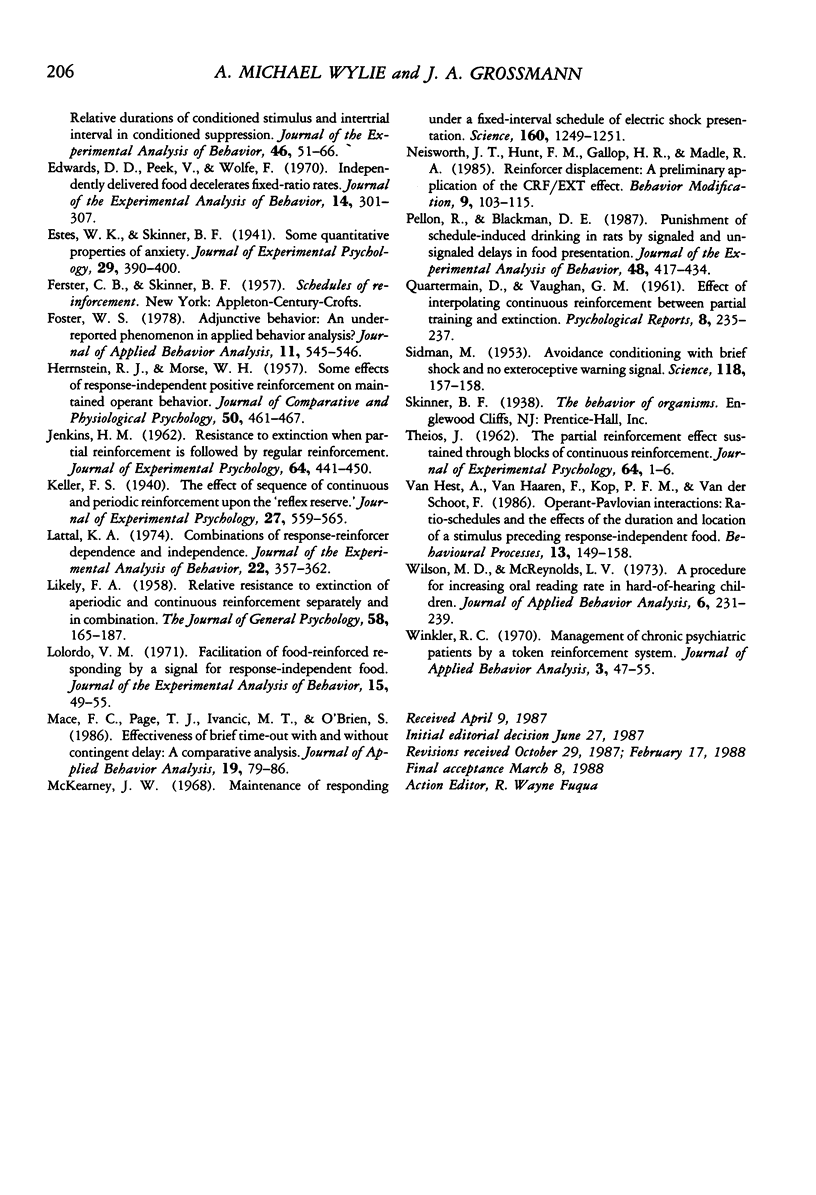Abstract
Prior clinical research suggests that superimposition and subsequent removal of a schedule of continuous reinforcement (CRF) may be a viable rate-decreasing procedure in that an extinction-like condition is arranged. The arrangement of similar conditions in the laboratory, however, resulted in the quick recovery of baseline rates. Lever-pressing patterns of eight male rats maintained by different schedules of variable-ratio and variable-interval food reinforcement were examined in an A-B-A experimental design of CRF food superimposition and removal. Responding was substantially reduced during the superimposition of CRF. Upon removal of the superimposed schedule, responding quickly approached presuperimposition baseline rates.
Full text
PDF





Selected References
These references are in PubMed. This may not be the complete list of references from this article.
- Azrin N. H., Hake D. F. Positive conditioned suppression: conditioned suppression using positive reinforcers as the unconditioned stimuli. J Exp Anal Behav. 1969 Jan;12(1):167–173. doi: 10.1901/jeab.1969.12-167. [DOI] [PMC free article] [PubMed] [Google Scholar]
- Azrin N. H., Wesolowski M. D. Theft reversal: an overcorrection procedure for eliminating stealing by retarded persons. J Appl Behav Anal. 1974 Winter;7(4):577–581. doi: 10.1901/jaba.1974.7-577. [DOI] [PMC free article] [PubMed] [Google Scholar]
- Coleman D. A., Jr, Hemmes N. S., Brown B. L. Relative durations of conditioned stimulus and intertrial interval in conditioned suppression. J Exp Anal Behav. 1986 Jul;46(1):51–66. doi: 10.1901/jeab.1986.46-51. [DOI] [PMC free article] [PubMed] [Google Scholar]
- Edwards D. D., Peek V., Wolfe F. Independently delivered food decelerates fixed-ratio rates. J Exp Anal Behav. 1970 Nov;14(3):301–307. doi: 10.1901/jeab.1970.14-301. [DOI] [PMC free article] [PubMed] [Google Scholar]
- Foster W. S. Adjunctive behavior: an under-reported phenomenon in applied behavior analysis? J Appl Behav Anal. 1978 Winter;11(4):545–546. doi: 10.1901/jaba.1978.11-545. [DOI] [PMC free article] [PubMed] [Google Scholar]
- HERRNSTEIN R. J., MORSE W. H. Some effects of response-independent positive reinforcement on maintained operant behavior. J Comp Physiol Psychol. 1957 Oct;50(5):461–467. doi: 10.1037/h0041506. [DOI] [PubMed] [Google Scholar]
- LIKELY F. A. Relative resistance to extinction of aperiodic and continuous reinforcement separately and in combination. J Gen Psychol. 1958 Apr;58(2):165–187. doi: 10.1080/00221309.1958.9920393. [DOI] [PubMed] [Google Scholar]
- Lattal K. A. Combinations of response-reinforcer dependence and independence. J Exp Anal Behav. 1974 Sep;22(2):357–362. doi: 10.1901/jeab.1974.22-357. [DOI] [PMC free article] [PubMed] [Google Scholar]
- Lolordo V. M. Facilitation of food-reinforced responding by a signal for response-independent food. J Exp Anal Behav. 1971 Jan;15(1):49–55. doi: 10.1901/jeab.1971.15-49. [DOI] [PMC free article] [PubMed] [Google Scholar]
- Mace F. C., Page T. J., Ivancic M. T., O'Brien S. Effectiveness of brief time-out with and without contingent delay: a comparative analysis. J Appl Behav Anal. 1986 Spring;19(1):79–86. doi: 10.1901/jaba.1986.19-79. [DOI] [PMC free article] [PubMed] [Google Scholar]
- McKearney J. W. Maintenance of responding under a fixed-interval schedule of electric shock-presentation. Science. 1968 Jun 14;160(3833):1249–1251. doi: 10.1126/science.160.3833.1249. [DOI] [PubMed] [Google Scholar]
- Neisworth J. T., Hunt F. M., Gallop H. R., Madle R. A. Reinforcer displacement. A preliminary study of the clinical application of the CRF/EXT effect. Behav Modif. 1985 Jan;9(1):103–115. doi: 10.1177/01454455850091007. [DOI] [PubMed] [Google Scholar]
- Pellon R., Blackman D. E. Punishment of schedule-induced drinking in rats by signaled and unsignaled delays in food presentation. J Exp Anal Behav. 1987 Nov;48(3):417–434. doi: 10.1901/jeab.1987.48-417. [DOI] [PMC free article] [PubMed] [Google Scholar]
- SIDMAN M. Avoidance conditioning with brief shock and no exteroceptive warning signal. Science. 1953 Aug 7;118(3058):157–158. doi: 10.1126/science.118.3058.157. [DOI] [PubMed] [Google Scholar]
- THEIOS J. The partial reinforcement effect sustained through blocks of continuous reinforcement. J Exp Psychol. 1962 Jul;64:1–6. doi: 10.1037/h0046302. [DOI] [PubMed] [Google Scholar]
- Wilson M. D., McReynolds L. V. A procedure for increasing oral reading rate in hard-of-hearing children. J Appl Behav Anal. 1973 Summer;6(2):231–239. doi: 10.1901/jaba.1973.6-231. [DOI] [PMC free article] [PubMed] [Google Scholar]
- Winkler R. C. Management of chronic psychiatric patients by a token reinforcement system. J Appl Behav Anal. 1970 Spring;3(1):47–55. doi: 10.1901/jaba.1970.3-47. [DOI] [PMC free article] [PubMed] [Google Scholar]


